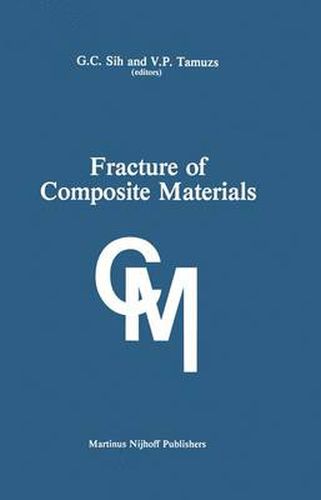Readings Newsletter
Become a Readings Member to make your shopping experience even easier.
Sign in or sign up for free!
You’re not far away from qualifying for FREE standard shipping within Australia
You’ve qualified for FREE standard shipping within Australia
The cart is loading…






This title is printed to order. This book may have been self-published. If so, we cannot guarantee the quality of the content. In the main most books will have gone through the editing process however some may not. We therefore suggest that you be aware of this before ordering this book. If in doubt check either the author or publisher’s details as we are unable to accept any returns unless they are faulty. Please contact us if you have any questions.
The Second USA-USSR Symposium on Fna~e 06 Compo~~e Mat~aGBPh took place at Lehigh University, Bethlehem, Pennsylvania, during 9-12 March, 1981. This bilateral program between the U. S. and Soviet Union was organized by Professor George C. Sih of the Institute of Fracture and Solid Mechanics at Lehigh Uni versity and Dr. Vitauts P. Tamuzs of the Institute of Polymer Mechanics of the Academy of Sciences of the Latvian SSR in Riga. The First Symposium was held in 1978 at Jurmala near the coast of Riga Bay. The primary reasons for initiating this series of Symposia were to dissemi nate present knowledge, to promote interchange of ideas, and to stimulate addi tional studies on the development of composite materials between the U. S. and USSR. Both countries have a vested interest in developing the capability to assess and utilize the attractive mechanical properties of composites so that they can be tailor-made to meet specific design requirements. Despite the in creasing number of published papers and articles, there is no communication more effective than on a person-to-person basis. It is with this objective in mind that a small group of engineers and scientists from the U. S. and USSR have planned to meet every two years to report recent progress on composite material research. The size of this group is approximately sixty (60) participants. The presentation involves about forty (40) technical papers which are published in volume.
$9.00 standard shipping within Australia
FREE standard shipping within Australia for orders over $100.00
Express & International shipping calculated at checkout
This title is printed to order. This book may have been self-published. If so, we cannot guarantee the quality of the content. In the main most books will have gone through the editing process however some may not. We therefore suggest that you be aware of this before ordering this book. If in doubt check either the author or publisher’s details as we are unable to accept any returns unless they are faulty. Please contact us if you have any questions.
The Second USA-USSR Symposium on Fna~e 06 Compo~~e Mat~aGBPh took place at Lehigh University, Bethlehem, Pennsylvania, during 9-12 March, 1981. This bilateral program between the U. S. and Soviet Union was organized by Professor George C. Sih of the Institute of Fracture and Solid Mechanics at Lehigh Uni versity and Dr. Vitauts P. Tamuzs of the Institute of Polymer Mechanics of the Academy of Sciences of the Latvian SSR in Riga. The First Symposium was held in 1978 at Jurmala near the coast of Riga Bay. The primary reasons for initiating this series of Symposia were to dissemi nate present knowledge, to promote interchange of ideas, and to stimulate addi tional studies on the development of composite materials between the U. S. and USSR. Both countries have a vested interest in developing the capability to assess and utilize the attractive mechanical properties of composites so that they can be tailor-made to meet specific design requirements. Despite the in creasing number of published papers and articles, there is no communication more effective than on a person-to-person basis. It is with this objective in mind that a small group of engineers and scientists from the U. S. and USSR have planned to meet every two years to report recent progress on composite material research. The size of this group is approximately sixty (60) participants. The presentation involves about forty (40) technical papers which are published in volume.